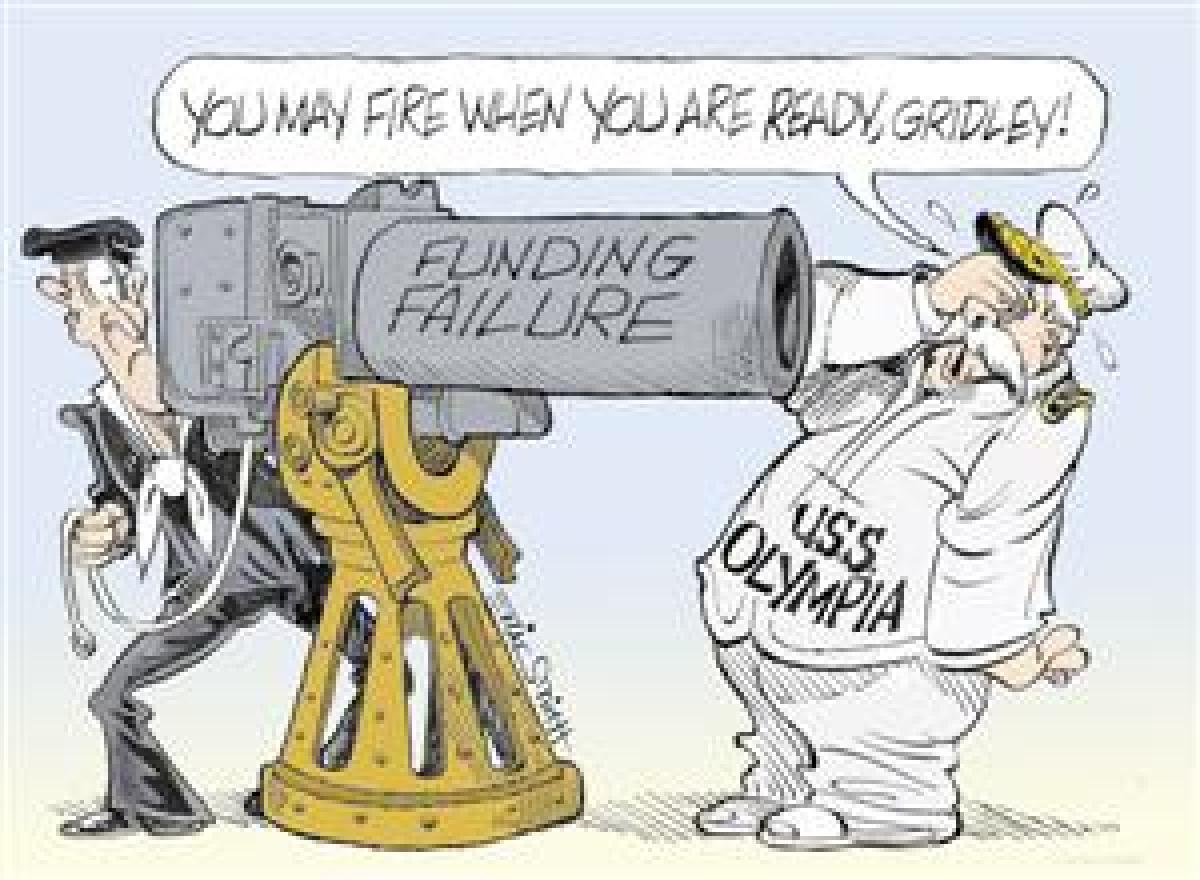Today, the protected cruiser Olympia (C-6) wallows off the Philadelphia waterfront, ready to sink. The Independence Seaport Museum, steward of this century-old vessel, a National Historic Landmark since 1964, is trying to recover from years of mismanagement and corruption. But reforms may have come too late.
Launched from San Francisco in 1892, the Olympia is one of the world's last examples of late-19th-century warship construction. A technological marvel in her heyday, the ship's vertical reciprocating steam engines earned her a spot on the list of National Historic Mechanical Engineering Landmarks in 1977.
The Olympia symbolized America's emergence as a global power after serving as Commodore George Dewey's flagship during the 1898 Battle of Manila Bay. In the closing days of World War I, the ship dabbled in expeditionary warfare, landing U.S. troops in Russia. She stood by in 1921 as General Billy Mitchell used rickety aircraft to help usher in the age of naval aviation, and later that year the old veteran transported the remains of an unknown American Soldier from France for interment in the Tomb of the Unknowns at Arlington National Cemetery.
With neither funds nor a sponsor, this irreplaceable piece of Navy history may be sent to an ignominious grave as an artificial reef.
The Olympia was a successful museum vessel, at least according to the numbers. More than 100,000 visitors annually paced the same decks where Dewey uttered the immortal fighting words, "You may fire when you are ready, Gridley."
In 1996, the museum, flush from a six-year $15 million capital campaign, took control of the Olympia. The future looked bright. But now, 14 years later, the nearly broke museum is giving up the distressed vessel, claiming her maintenance poses an insurmountable fiscal challenge.
What has been steadily sinking the ship Not disinterest. Instead, more modern American vicesgreed, corruption, and civic disengagementmay have overpowered this monument to the strong, optimistic America of old.
As the Olympia sat deprived of basic maintenance, the Independence Seaport Museum's chief, John S. Carter, enjoyed perks far above compensation provided at peer institutions. In 2004, his salary exceeded $350,000, and he lived rent-free in a $1.7 million executive mansion bought, maintained, remodeled, and even furnished with museum funds, according to news reports.
The criminal complaint against Carter claimed that by 2006, the museum had been billed more than $335,000 for work on the director's Massachusetts home. While Carter charged the museum over $280,000 for personal purchases of jewelry, home electronics, designer clothing, and rare artwork, almost $200,000 dollars in maritime artifactsincluding a rare print of Deweywent missing.
Rather than support the Olympia, Carter defrauded the museum of more than $900,000 dollars in a scheme to restore and resellfor personal gainseveral antique pleasure boats.
The museum faltered. Between 1999 and 2005, its endowment went from $48 million to a mere $7.7 million. Admission receipts tumbled by half. And all this time, the final arbiters of fiscal management, the museum board, did nothing.
Outside the museum, interested stakeholders did little more. In 2002, after the U.S. Naval Institute's own Naval History magazine published a devastating article detailing the Olympia's dire condition, Carter flatly rejected the story in a letter, claiming the account was "somewhat dated and generally uninformed." This strange rebuttal evoked little response, even though the Olympia's decay, well documented by photographs in the magazine, was undeniable.
Carter's looting of America's historic treasure continued unabated. Apparently gambling on a federal bailout, the museum director carried on until his house of cards began crumbling in 2005.
In 2007, Carter was sentenced to a 15-year prison term for defrauding the museum of more than $1.5 million over his 17-year tenure.
To prevent this sort of disaster in the future, now-passive stewards of naval legacy must recognize that history is not policy. For particularly egregious cases, normally neutral organizations like the Naval Institute are obligated to champion decaying pieces of maritime heritage. Without advocates, far too few speak for history.
And until alternative stewards like the Naval History & Heritage Command step up to inventory and prioritize critical pieces of naval heritage, the Naval Institute must go the extra mile, highlighting potential problems before they become unsolvable.
Unfortunately, this proposal may come too late to save the Olympia. But the Naval Institute can start embracing a newly active role in protecting critical naval heritage by demanding the Olympia be rehabilitated. This is an investment worth making.
The group Friends of the Cruiser Olympia is raising money to save the ship. To find out more, visit www.fotco.org.




